Leadership (R)Evolution: Why We Need to Radically Rethink Leadership and Management in the New Norm
today2022.02.19. 132

Most probably, the chaos of the past two years has made every organization’s leadership team reconsider its responsibilities and effectiveness. They had to rethink their approach to the well-being of their employees, their career path support, retaining talent, the employee experience in general, and how to actually lead in this new era.
Managers’ responsibility is not only about results and execution – they are supposed to be developing, coaching, and mentoring their team. Building and maintaining personal relationships with each employee is also critical, especially during these uncertain times.
The world of work has changed drastically for many of us, and the way organizations operate has changed too. Leadership and management must rethink and adapt to this new norm.
***
During The HR Congress World Summit, some of the most remarkable professionals shared their thoughts on the topic in an insightful panel discussion.
The conversation was led by Toby Hough, Director of People and Culture from Hibob, and the panelists were Michele Zanini, Co-Author of HUMANOCRACY, Patrick Caldwell, COO from FundApps, and Victoria Bradford, Head of People Operations from Funding Circle.
Why We Need to Radically Rethink Leadership and Management in the New Norm and What Leadership Actually Means in a Modern Organization
It’s time to rethink how we engage our team in quality leadership conversations. Victoria introduced the concept of “lazy leadership.” She explained we are at a point now where the old leadership tactics of leading by fear in the hierarchy of power in a corporate environment just doesn’t work anymore.
Lazy leadership relies on building rapport through social interactions in the office. However, when working remotely, or even in hybrid setting, you don’t see your employees on a day-to-day basis. Therefore, it is essential that leaders consciously carve out time in a day to have one-on-one time with their team members and have conversation with employees, human to human, to find out who they really are. This is shift links to performance reviews as well, since leaders must use regular individual time to have performance conversations and learn how to manage performance without seeing those people chained to their desk in the office every day.
“This whole 9 to 5 concept has shifted.”
Continued by Victoria, leaders and managers must use these opportunities to harness their management ability and reconsider that the way we have been assessing performance pre-pandemic may not work anymore. In other words, lazy leadership will get unraveled. Those who are true leaders, who truly believe in people and trust that their people to do good jobs, will get that trust in return, and subsequently, those who don’t operate in that way perhaps might not be successful in this new normal.
Pat commented that it is a harsh but relevant way of putting it. He then continued with the concept called an “accidental leader.” When a team starts growing, often one of the most productive team members is promoted to a team leader role.
However, what should be done instead is asking: “What is the leadership that is actually needed within this team and company?” or “How do we actually assess someone’s skills to be able to do that?” Just because somebody might be the best developer in a team doesn’t necessarily mean that they’re going to be successful in a leadership role.
Victoria then added, “I think that is a really good point about being scared of fixing problems. I don’t think that is necessarily an HR problem to solve – I think that is HR in collaboration with other business leaders. Where you identify that you have got an unnecessary layer of middle management, not being afraid of pulling that rug out. It is going to be okay, and actually you might be in a position where you are far more productive, you have got happier employees, and the output is greater.”
Do We Need to Change the Definition of Leadership?
Pat recalled: “Michele, you showed that org[anization] structure with two directors and the nine hundred people and the coaches. The funny thing is that when we think of the leaders, we automatically assume those two directors are the leaders. But in actual practices, in term of who is inspiring work to be done, who might be making decisions, and who is leading that communication interface, there is probably fifty of those nine hundred people demonstrating leadership. We just don’t call them leaders, and maybe we need to redefine some of that as well.”
Michele then added: “It is such an important point. By the way, those are nine hundred teams, sixteen thousand people, and teams who don’t really have a lead, but you are absolutely right because I am sure if I asked you, “When I say executive team, who do you think about?” you probably think about the C-suits. If the definition of leadership is making amazing things happen and catalyzing positive changes in an organization, I am not sure all those people are leaders in that way.”
She continued, “In a way, I wish we could come up with a different term than leadership because it has been kind of compromised and conflated with management and positional authority. And as you say, Pat, sometimes the people that have the most power, the most influence, the most positive impact in an organization, are not correlated to where you sit in the hierarchy.”
Michele finished by saying, “I think HR is a little bit complicit in perpetuating this misconception because we have high potential programs and leadership development programs, but everything is tiered by the rank of the ladder. It is not that we don’t want hierarchy, but the question is, ‘How is the hierarchy built?’ and ‘To whom is that hierarchy accountable?’ ‘Is it accountable to the lead, or is it accountable to the person that appointed you?’ And I think we can reimagine that as well.”
***
When it comes to doing things differently day-to-day as an HR leader to bring about readiness for a new version of the world of work, Victoria added:
“Promoting people in the business to leadership roles, who are not your stereotypical leader. Those at the top of the pre-established hierarchy can give a platform to those who are leaders in the area they work in, thought leaders in the business or they are the most creative.”
She continued, “So, they are standing alongside them in front of the rest of the employee population or in front of the market, and then you get to the point where it becomes the norm. You might have your leader as a CEO, but you might also accept that this individual contributor who designed a new product is also a leader within our company. This will really inspire those as well who frankly don’t want to do people management – it doesn’t suit everyone and we know that. Doing these would really make a difference, however it does require some vulnerability from the leaders that we typically have across the industry. “
What Do You Think HR Should Expect of the Role in Such A Shift?
HR has a unique opportunity to rethink the organization and work design. Hybrid work is the perfect example, added Pat. We can notice how many companies have defaulted back to a 1% incremental improvement on 2019 flexible work practices, when we just saw probably 30 years of evolution in hybrid work condensed within a little 18-month period.
Leaders also need to be more transparent and willing to show the human side. “I love that piece around vulnerability,” continued by Pat. “If I look at my career, I have probably spent a decent chunk of my career contributing to this problem. That is the nature of it because I think as humans, we are taught and built to not want to say things like ‘I don’t know’ or ‘Maybe someone else has a different answer to this,’ and then we lean back on our experience to work it out…And the reality is that the challenges that we are facing are going to require a different type of leadership, a non-lazy leadership to be able to solve the problems of tomorrow.”
He concluded by saying, “We have to change that lens. I think it is not just an HR thing, it is fundamentally a business item around designing work rather than roles. And when you put all them together, we are going to have to refresh how we approach leadership and work and not just lean on a leadership team whose narrow tunnel vision is always going to influence the outcome.”
What Does the Future of Work Actually Mean?
As a society, we face amazing challenges and opportunities, commented by Michele Zanini. She said that you can mobilize a little bit of commitment from people by giving them a little bit more flexibility, but that, to her, is a low bar. She believed that we deserve better and should aim higher.
She said, “We need to consider the ‘future of work’ is more than a modality shift. I don’t want to be dismissive of it, it is significant. If you don’t have to commute, if you can be at home, it is an advantage. But it only applies to a fairly small sample of the population, so you are not thinking about everybody else, like the 80% that has to show up at work because you can’t be in a grocery store via Zoom.”
“I think freeing people at work creates that sense of ownership,” Michele added, “which means giving people autonomy and discretion, but at the same time it also means giving them the tools so that they can exercise that autonomy responsibly and giving them the information so that they can do that in an intelligent way.”
Measurement is Key In Ensuring the Right Steps Are Taken In the Right Direction to Rethink Leadership
“People analytics is certainly in the front line when it comes to offering valuable business insights based on people data,” added Victoria. “Especially in times of the ‘Great Resignation’ everyone is talking about how it’s important to measure and make action in regards to attrition and why people are leaving, and whether people are coming back from parental leave.” “However,” she continued, “Another important issue which is very hard to measure through sentiment – we shall get to the point when it becomes a norm to talk about leaders who don‘t typically look like ‘leaders’ as we imagine today. That’s when true societal shift will happen.”
There were many more valuable insights during the discussion, so watch the video below to find out more.
Written by: Mihaly Nagy
Culture Employee Experience Future of Work HR Tech Leadership
Previous post

- 2178
labelArticles today2022.02.18.
Why HR Tech Market booms with 12 billion investment
The HR Tech industry is not showing signs of slowing down any time soon, with $12 billion investment in 2021. Doubling the previous two years total investment, and starting 2022 [...]
Similar posts

labelArticles today2024.07.24.
AI-Powered HR: Strategic Benefits and Practical Applications

labelArticles today2024.06.24.








Post comments (0)